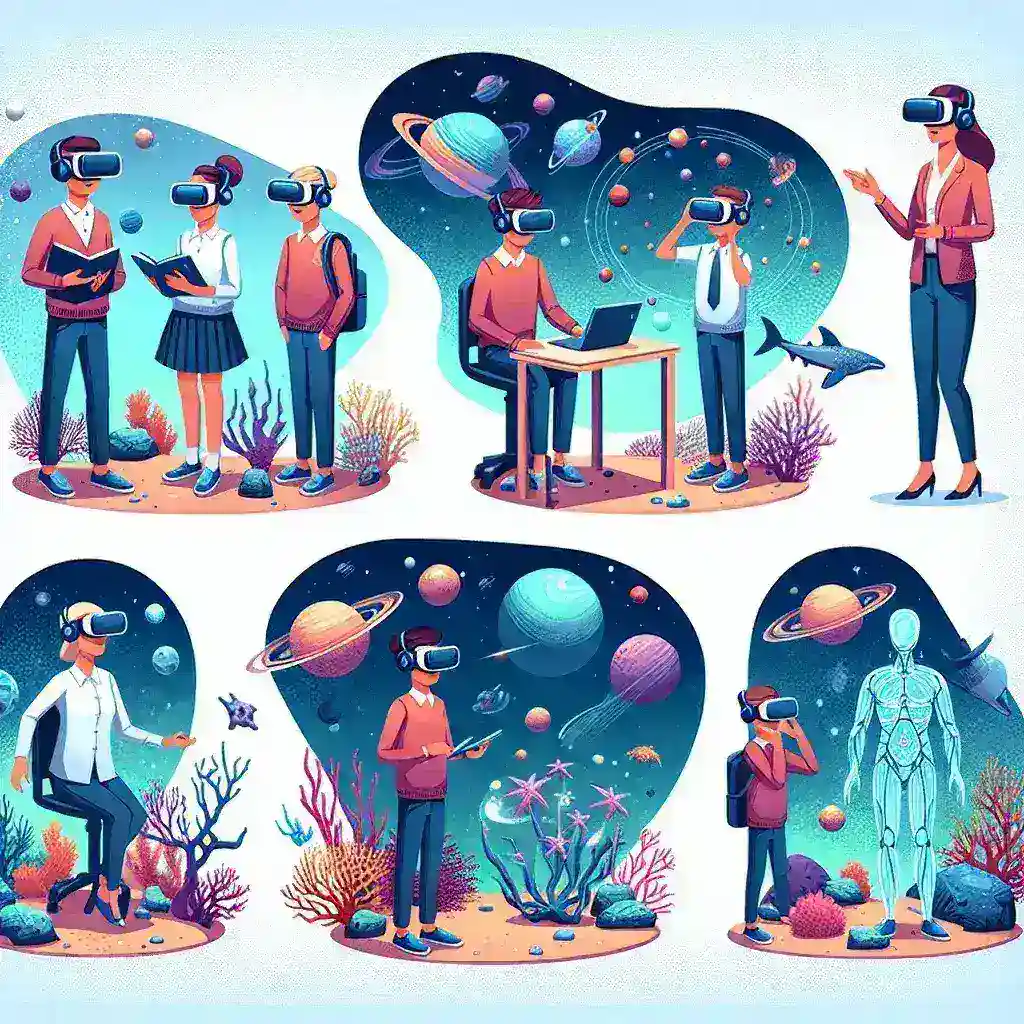Introduction
Virtual reality (VR) is no longer a niche technology confined to the realms of gaming and entertainment. It is proving to be a transformative tool in the field of education, providing immersive learning experiences that enhance student engagement and understanding. This article explores how VR is revolutionizing education, its benefits, challenges, and future prospects.
What is Virtual Reality?
Virtual reality is an interactive, computer-generated experience within a simulated environment. It primarily incorporates auditory and visual feedback, but may also allow other types of sensory feedback like haptic. VR environments can simulate the real world or create entirely new worlds for users to interact with.
Applications of VR in Education
1. Immersive Learning Experiences
VR enables students to experience subjects as never before. For example, history students can take virtual tours of ancient civilizations, while biology students can explore the inside of a human cell. These immersive experiences make learning engaging and memorable.
2. Enhanced Engagement
VR increases student engagement by making learning interactive and fun. Traditional teaching methods can sometimes fail to capture student interest, but VR’s immersive nature keeps students motivated and involved in the learning process.
3. Safe Learning Environment
VR provides a safe space for students to practice skills without the risk of real-world consequences. Medical students can perform virtual surgeries, and engineering students can conduct experiments in a controlled, virtual environment.
Benefits of Virtual Reality in Education
- Improved Retention: VR’s immersive experiences help students retain information better than traditional learning methods.
- Personalized Learning: VR allows for individualized learning experiences, accommodating different learning styles and paces.
- Accessibility: VR can make education more accessible to students with disabilities. For example, VR can help visually impaired students navigate and interact in a virtual classroom.
- Cost-Effective: While initially expensive, VR can reduce long-term educational costs by providing virtual resources in place of physical ones.
Challenges of Implementing VR in Education
1. High Initial Costs
Setting up VR labs and acquiring VR equipment can be expensive. Many educational institutions may struggle with the initial investment required.
2. Technical Challenges
Integrating VR into existing educational frameworks can be technically challenging. There is also the need for ongoing maintenance and support.
3. Quality of Content
Not all VR educational content is created equal. Ensuring that the content is educational, accurate, and engaging can be a significant challenge.
Future of VR in Education
The future of VR in education looks promising. As the technology becomes more affordable and widespread, its applications in education will likely expand. Future developments may include more sophisticated simulations, broader access to VR technology, and collaboration within virtual environments.
Conclusion
Virtual reality has the potential to significantly transform education by providing immersive, engaging, and versatile learning experiences. While there are challenges to overcome, the benefits of integrating VR into education are undeniable. As we look to the future, it’s clear that VR will play a crucial role in shaping the educational landscape, making learning more effective and accessible for all students.

